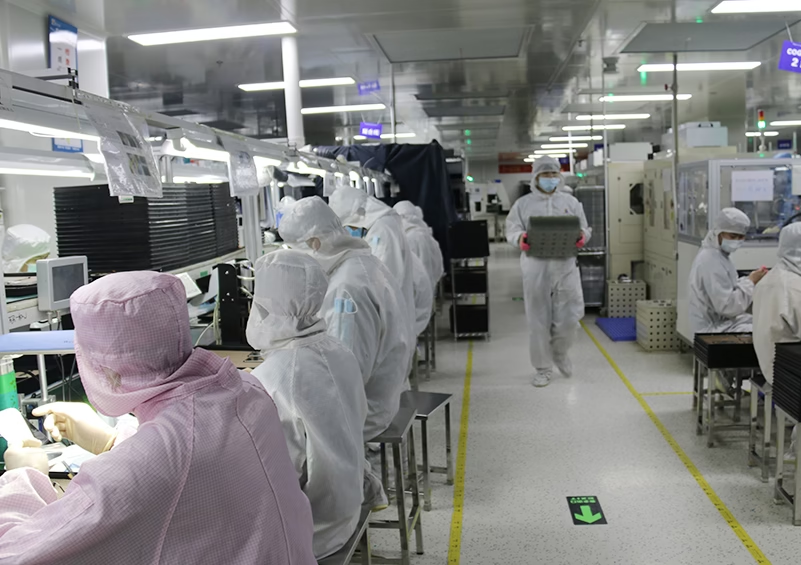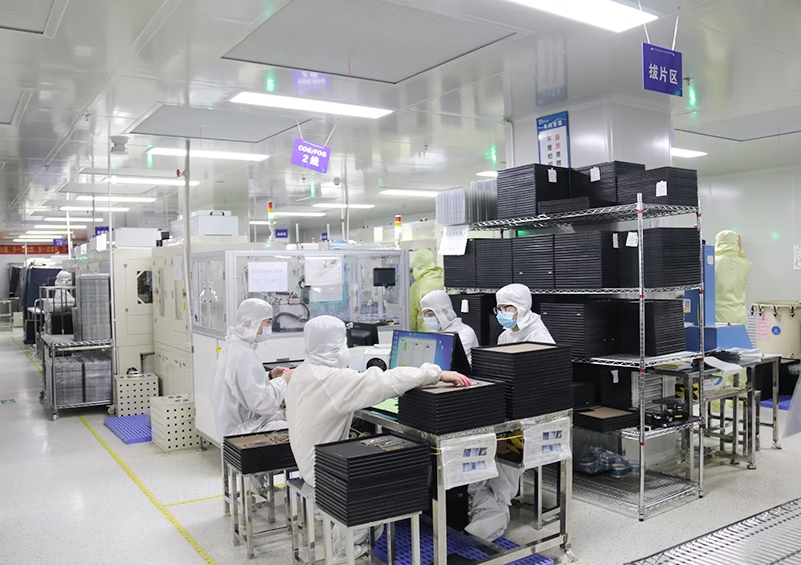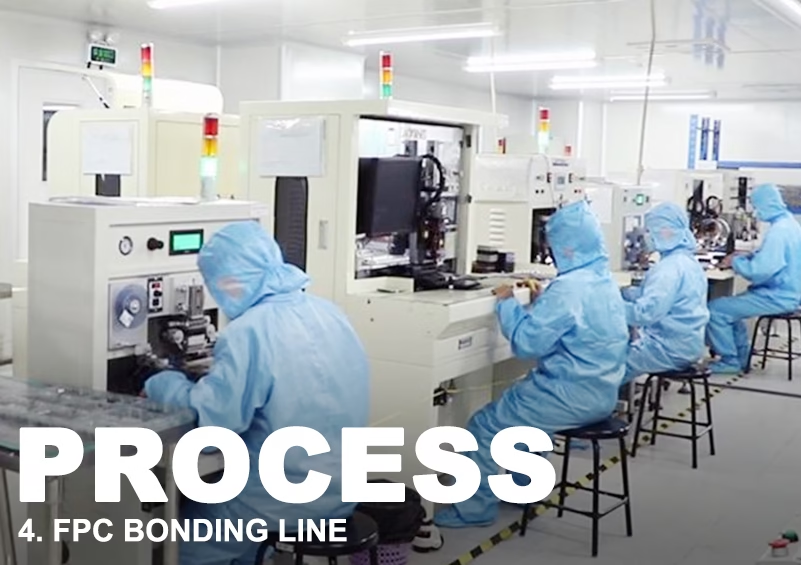Following the successful Chip on Glass (COG) bonding of driver ICs to the glass substrate, the resulting panel needs a way to communicate with the external control electronics – the system’s motherboard or display controller. This vital connection is established through a Flexible Printed Circuit (FPC). Attaching this flexible ribbon of circuitry to the precisely prepared pads on the glass panel is the function of the FPC Bonding process, typically carried out within a highly automated FPC Bonding Line. This step is the final major bonding process on the glass itself, directly impacting the signal integrity and overall reliability of the completed LCD module.
The Role of the Flexible Printed Circuit (FPC)
Think of the FPC as the data and power highway for the LCD panel. It carries the video signals, timing control signals, and power from the system’s display driver circuit board (or main board) to the COG-bonded driver ICs on the glass. The FPC is designed to be thin and flexible, allowing it to be bent and routed within the tight spaces of modern electronic devices. One end of the FPC has an interface connector (like a ZIF connector) to plug into the system board, while the other end has a set of fine-pitch metallic fingers that must be bonded to corresponding conductive pads located along the edge of the LCD glass panel. These glass pads are electrically connected to the driver ICs previously bonded via COG.

The Challenge of FPC Bonding
Like COG bonding, FPC bonding demands extreme precision. The metallic fingers on the FPC are often even finer in pitch than the bumps on the driver ICs, and there can be a large number of them – sometimes hundreds – packed closely together. These FPC fingers must align perfectly, within a few micrometers, with the corresponding pads on the glass substrate. Misalignment or incomplete bonding of even a single finger can result in defects such as non-working lines, incorrect colors, or complete segments of the display failing.
Furthermore, the bond must be electrically conductive, providing a low-resistance path for signals, and mechanically robust to withstand handling and environmental stresses over the life of the product. This requires precise control over heat, pressure, and time during the bonding process.
How Automated FPC Bonding Works
The FPC bonding process is typically performed using automated equipment, often referred to as an FPC Bonder or Pulsed Heat Bonder (due to the thermal profile used). The process within a dedicated FPC Bonding Line involves several automated steps:
- Glass Panel Loading: The panel, already processed through the COG line, is automatically loaded onto a precision stage.
- ACF Laminating: Similar to COG bonding, Anisotropic Conductive Film (ACF) is the standard material used for FPC bonding. A strip of ACF is precisely laminated onto the bonding area of the glass substrate. This automated process ensures accurate placement and adhesion of the ACF strip.
- FPC Feeding and Positioning: The FPC ribbons, often supplied in reels or stacks, are automatically fed, cut (if necessary), and picked by a robotic arm or vacuum system.
- Vision Alignment: High-resolution cameras capture images of the FPC fingers and the pads on the glass. Sophisticated vision alignment systems use fiducial markers on both components to calculate any positional discrepancies. The machine’s robotics then precisely adjust the position of the FPC and/or the glass stage to achieve perfect alignment (typically within 5-10 µm). This is a critical step – the FPC must align perfectly before bonding.
- Bonding (Pulsed Heat Bonding): Once aligned, a heated bonding head (often called a thermode) comes down and applies controlled heat and pressure to the FPC/ACF/Glass stack. The heat melts the adhesive component of the ACF, and the pressure forces the conductive particles within the ACF to create electrical contact between the FPC fingers and the glass pads. The heat is applied using a precise pulse profile (Pulsed Heat Bonding), allowing rapid heating for bonding and controlled cooling to set the adhesive and ensure bond strength.
- Cooling: After the pulsed heat cycle, the bonding head or a separate cooling mechanism cools the bonded area to solidify the ACF adhesive and finalize the mechanical and electrical connection before the head lifts.
- Inspection: Automated optical inspection (AOI) systems examine the bonded area for alignment accuracy, presence of all bonds, and any physical defects. Electrical testing (like a simple continuity test) might also be performed at this stage or later.
- Unloading: The completed panel with the FPC bonded is automatically unloaded and transferred to the next assembly stage.

Why Automation is Essential for FPC Bonding
Manual FPC bonding at the required precision and speed is virtually impossible for mass production. Full automation provides:
- Unparalleled Precision: Vision systems and automated mechanics achieve alignment accuracy far beyond human capability, crucial for fine-pitch FPCs.
- Consistency and Repeatability: Automated control of temperature, pressure, and time ensures uniform bond quality across thousands of panels, leading to higher yields and reliability.
- High Throughput: Automated lines process panels much faster than manual methods, meeting the demands of modern electronics manufacturing.
- Reduced Defects: Minimizes handling, reducing the risk of contamination, scratches, or ESD damage.
Impact on the Final Product
The FPC bond is the final electrical gateway to the display pixels. A high-quality, reliable FPC bond is fundamental to the display’s functionality. Poor FPC bonding can manifest as dead lines, flickering, or intermittent connection issues. The sophisticated FPC Bonding Line ensures this critical connection is made correctly every time, guaranteeing reliable performance of the LCD module.
In summary, the automated FPC Bonding Line is a highly precise and crucial stage in LCD manufacturing. By accurately attaching the FPC to the glass substrate using advanced techniques like ACF and pulsed heat bonding, it provides the essential electrical link that brings the display to life, connecting the intricate pixel control circuitry to the external world.




